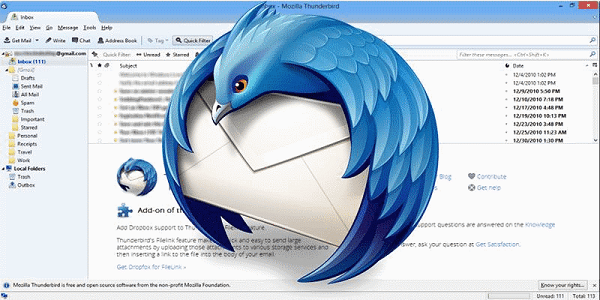For millions of users, Mozilla Thunderbird has proven to be a reliable and versatile email client. However, like any software, Thunderbird isn’t immune to occasional hiccups. One such issue that users might encounter is the error message, “You are about to override how Thunderbird identifies this site.” While this error message might seem cryptic at first, understanding its implications and consequences is essential for maintaining a safe and secure email experience.

Unpacking the Error Message
When Thunderbird displays the error message, “You are about to override how Thunderbird identifies this site,” it usually occurs when the email client encounters a mismatch between the security certificate of the email server and the domain it claims to be from. In simpler terms, Thunderbird is warning users that the security credentials of the email server don’t match the domain mentioned in the email. This discrepancy could potentially be a sign of a security threat or a misconfigured server. Because the error message has nothing to do with data, there is no point to repair corrupt thunderbird profile.
Consequences of Ignoring the Warning
The above error message is more of a warning than an error prompt. That is why it is crucial to choose your next action wisely else you might end up losing your data.
Security Vulnerabilities: Ignoring this warning and proceeding could expose users to security vulnerabilities. The email might be a phishing attempt, where attackers mimic a legitimate domain to trick users into revealing sensitive information like passwords or credit card numbers.
Data Breach: Clicking through this warning might lead to data breaches. By ignoring security alerts, users risk sending confidential information to malicious actors, compromising their personal and financial data.
Malware Distribution: Cybercriminals might exploit this situation to distribute malware. By clicking on suspicious links or downloading attachments from compromised emails, users could inadvertently infect their systems with malicious software.
Identity Theft: Falling victim to phishing attempts facilitated by ignoring such warnings can lead to identity theft. Attackers can use stolen information for financial fraud, opening unauthorized accounts, or committing other cybercrimes.
Loss of Privacy: Even if no immediate harm is apparent, ignoring these warnings could result in a loss of privacy. Unauthorized access to email accounts can lead to exposure of personal conversations, sensitive documents, and other private information.
Steps to Address the Error Message
Check out the list of possible actions you should take before addressing the pop up. Since this is not an error message occurring due to Thunderbird malfunctioning; we cannot take any specific action like recreate Thunderbird profile or migrate the Thunderbird mailbox data; to fix the problem.
Do Not Proceed: The most crucial step is to not proceed when encountering this error message. Avoid clicking on links, downloading attachments, or providing any sensitive information if you have doubts about the email’s legitimacy.
Verify the Source: Cross-reference the sender’s email address with official contacts. Reach out to the supposed sender through official means (not by replying to the suspicious email) to confirm the authenticity of the email.
Check Certificates: If you’re technically inclined, you can inspect the email’s security certificates to verify their legitimacy. Legitimate organizations usually have proper security certificates.
Update Thunderbird: Ensure that your Thunderbird client is up to date. Sometimes, these warnings might be triggered by outdated software or compatibility issues.
Conclusion
The error message, “You are about to override how Thunderbird identifies this site,” serves as a warning beacon for potential security threats. Ignoring this message can have severe consequences, including security vulnerabilities, data breaches, and identity theft. By taking the right steps—such as not proceeding with suspicious emails, verifying sources, and staying educated about phishing tactics—you can safeguard your email experience and personal information. Remember, vigilance and caution are your best defenses against cyber threats in the digital age.
About The Author